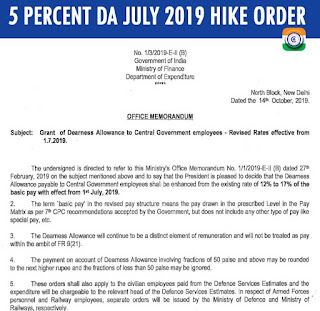7th Pay Commission – Centre all set to Implement Recommendations – Notification most likely in June
The Central Government is all set to implement recommendations of 7th
Pay Commission. Reportedly, the notification for the ‘increment
process’ will be issued in the month of June.
7th Pay Commission – Centre all set to Implement Recommendations –
Source added, Centre will issue notification most likely in the third
week of June after Cabinet’s nod to the recommendations of 7th pay
Commission.
The Central Government is all set to implement recommendations of 7th
Pay Commission. Reportedly, the notification for the ‘increment
process’ will be issued in the month of June.
Source added, Centre will issue notification most likely in the third
week of June after Cabinet’s nod to the recommendations of 7th pay
Commission.
A Finance Ministry source was quoted by a news website as saying,
“But in case it’s not issued in third week of June, it will be issued at
the beginning of fourth week of June. Usually it takes around one week
to issue a notification, after cabinet nod”.
Ministry is also hopeful that Empowered Committee of Secretaries
which is looking after the recommendations at the moment, will submit
its report by June 15.
Most likely, increased payout will be handed over to central
government employees earliest at the end of June or latest by July.
However, sources suggest that Empowered Committee of Secretaries which
has been entrusted the responsibility to overview recommendations will
not make much change into it.
Earlier, the government conceded that implementation of new pay
scales proposed by the 7th pay commission is estimated to put an
additional burden of Rs 1.02 lakh crore which is around 0.7 per cent of
GDP.
Giving details of financial implications of the recommendations,
Minister of State for Finance Jayant Sinha informed Parliament that the
burden on pay head would increase by Rs 39,100 crore to about Rs 2.83
lakh crore in the current fiscal.
Sinha also said that the announcement of Dearness Allowance has no impact on the recommendations of the 7th Pay Commission.
The Empowered Committee of Secretaries headed Cabinet Secretary P K
Sinha to process the recommendations of the 7th Pay Commission was set
up in January. The recommendations of the Pay Commission will have
bearing on the remuneration of 47 lakh central government employees and
52 lakh pensioners.
Source:
One India









